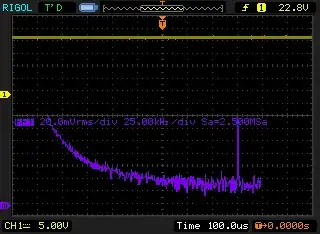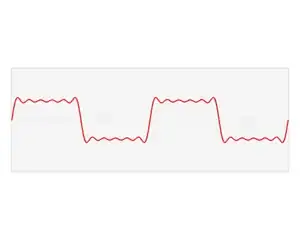I have a 15volt dc signal with an FFT on channel 1. I see a pulse on the FFT. Does this mean I have a voltage at a certain freg?

I have a 15volt dc signal with an FFT on channel 1. I see a pulse on the FFT. Does this mean I have a voltage at a certain freg?

You see a spike. That means this frequency is very much present in your signal. All the other frequencies don't have a spike, but they're still present, though less.
But really, why are you doing fourier transform on a DC level, as KyranF points out?
On Wikipedia, Fourier transform is explained, if that's the problem. This image (from there) may help as well:
